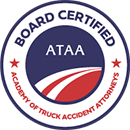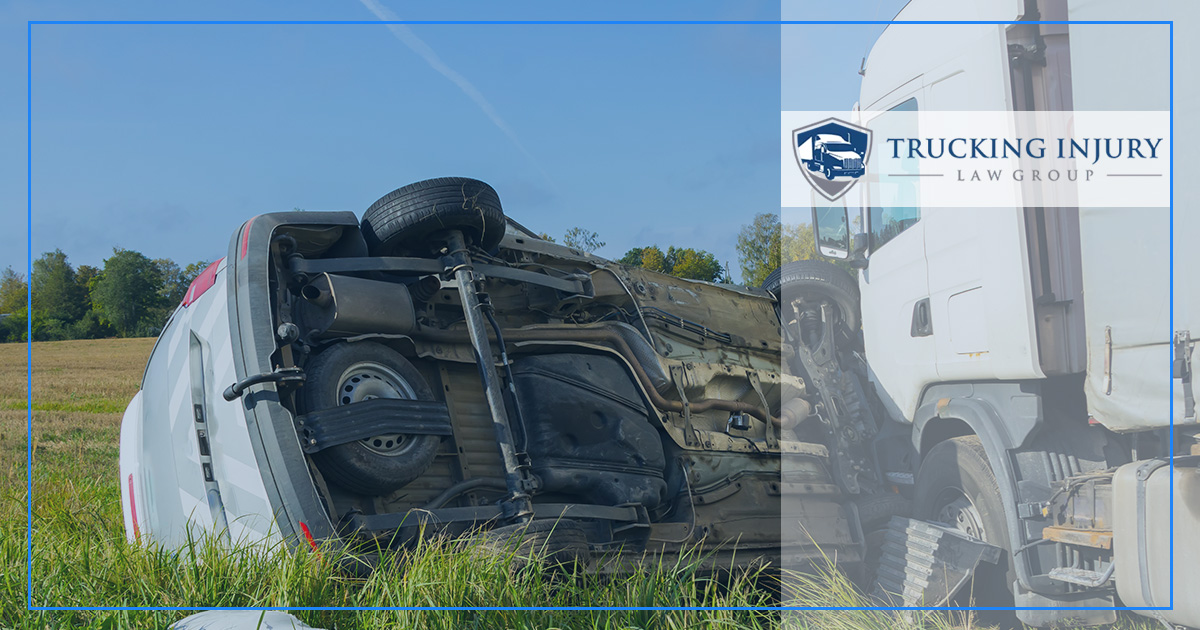Who Is More at Risk During a Large Truck Collision?
A car’s suspension system is designed to mitigate the forces of an impact on an automobile when it drives on a road. That is why they are called “shock absorbers.” In an impact, a car’s bumpers and airbags also absorb a certain amount of the force in a collision. However, if that collision is between a truck and a car, the weight disparity spells disaster for the car. That is one of the many reasons why the average vehicle is more at risk during a large truck collision.
How significant is the weight disparity between a truck and a car? A fully loaded semi-truck can weigh up to 80,000 pounds, while the average weight of a car is around 4,000 pounds. That makes the truck 30 times heavier than a car. The full force of that weight creates a level of destruction that is not unlike a human stepping on an ant. It never ends well for the ant.
The Fatal Statistics
The Insurance Institute for Highway Safety (IIHS) is on a mission to educate drivers to reduce the number of road accidents. As part of that mission, they correlate data related to collisions. They have found that in 2022, 4,764 people died in a crash involving large trucks. Of that number, 66% of the fatalities were the occupants of cars, and another 16% were pedestrians, motorcycles, or bike riders. That number represents a 51% increase over the last decade.
Numbers gathered by Federal Motor Carrier Safety Administration (FMCSA) show close to 13 million trucks are registered nationwide. That increases the odds of you encountering a large truck on your daily commute.
Driver Fatigue
Another reason car drivers are more at risk for a truck collision is the increased potential of driver fatigue. According to the AWB Institute, the average commute time for Washington residents is around 26 minutes. Add in traffic, which means you might spend around an hour and a half each day driving back and forth from work.
The average trucker can spend 11 hours on the road driving their loads. The Federal Motor Carrier Safety Administration mandates that a truck driver needs to take a 30-minute break after driving straight for 8 hours. When they hit the 11-hour mark, they need to take a break for 10 hours.
However, just because that “break clock” starts at the 11th hour doesn’t always mean the truck driver is getting a full 10 hours of rest. They have to factor in eating, showering, loading, or unloading their truck. They might even have to wait in line at a depot. That could result in just a few hours of sleep after all that driving. That creates the conditions for a drowsy driver in control of a very heavy truck.
Stopping Distances and Lane Changes
Maintaining the correct braking distance between you and the vehicles in front of you will make a huge difference in avoiding collisions. The average car needs around 300 feet of braking distance to come to a complete stop when traveling at highway speeds of around 65 mph. Compare that to a truck that needs around twice that amount to come to a complete stop.
Another way to look at this is a car needs the approximate length of a football field to stop, and a truck needs two football fields. To remain safe, you would need to be at a distance of around 13 cars between you and a truck that is coming to a sudden stop. Have you ever kept that kind of distance?
Lane changes are another risk factor for truck collisions. Every vehicle has a blind spot when it comes to changing lanes. Cars are at an advantage because drivers can use their side-view and rear-view mirrors. A trucker only has the side-view mirrors. They could change lanes without seeing an approaching car.
That puts the responsibility on a car driver to see the potential lane change, but it doesn’t absolve the truck driver from liability. They need to use turn signals and exhibit extreme caution when changing lanes. One sideswipe tap into an approaching vehicle would send that car careening into guardrails or other cars.
Underride Accidents
An underride accident happens when a car collides with a truck and slides under the trailer. This can happen when the truck switches lanes without noticing an approaching vehicle. It can also happen if the truck stops short without any regard to traffic. Recently, the government issued new mandates for rear guards to prevent this type of accident. Unfortunately, those same mandates are not in place for the sides of trucks.
Working with Experience
Being involved in a collision with a truck is going to be a traumatic experience on many levels. It is important that the accident victim seeks out experienced counsel to decide on the best course of action for seeking a remedy to that collision. The Trucking Injury Law Group is standing by to provide support and guidance for anyone who has been involved in this type of incident. If you were involved in a truck accident, call to schedule a free consultation, and let’s discuss what to do next.






